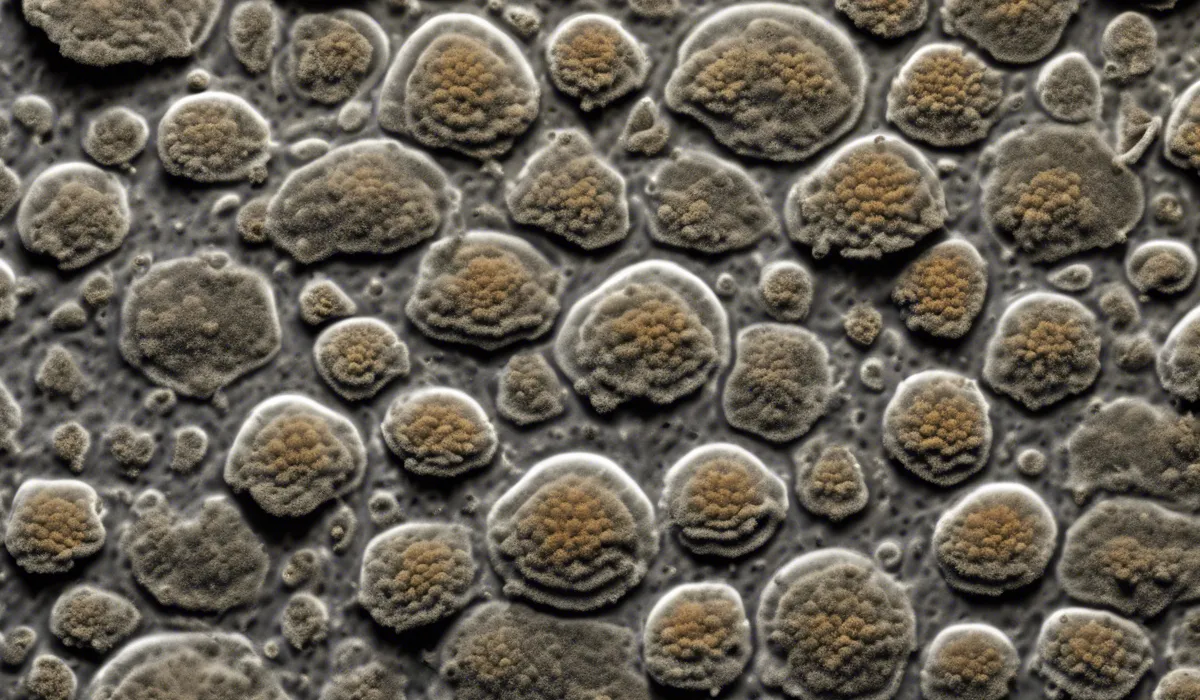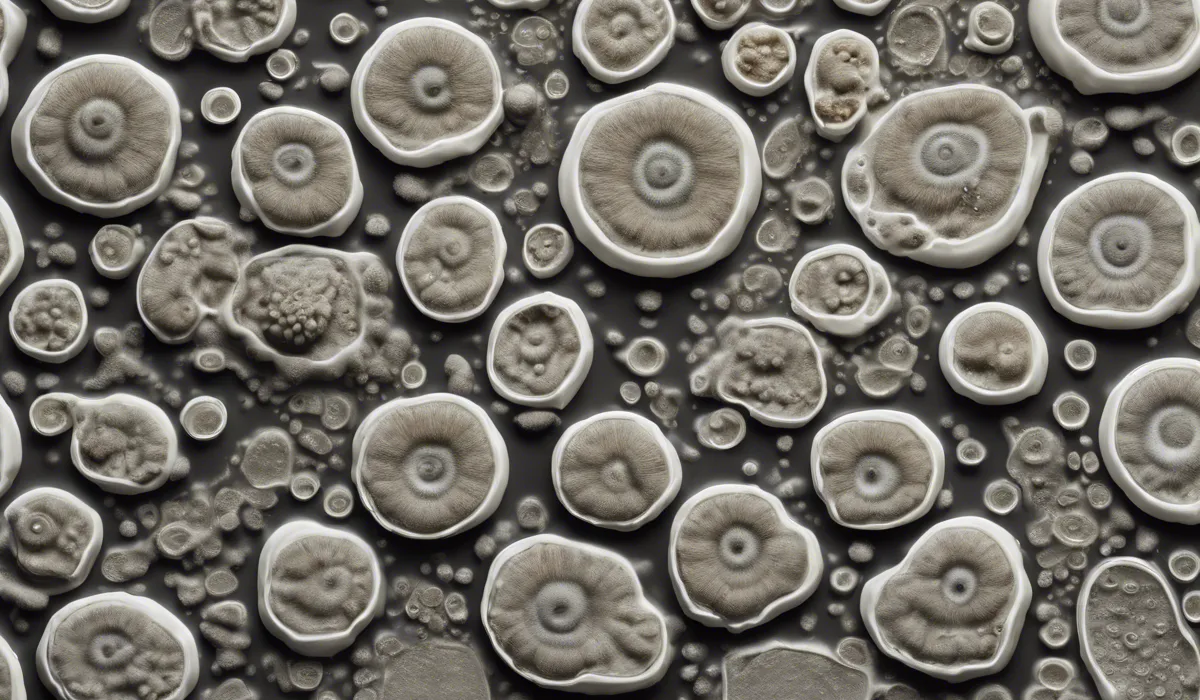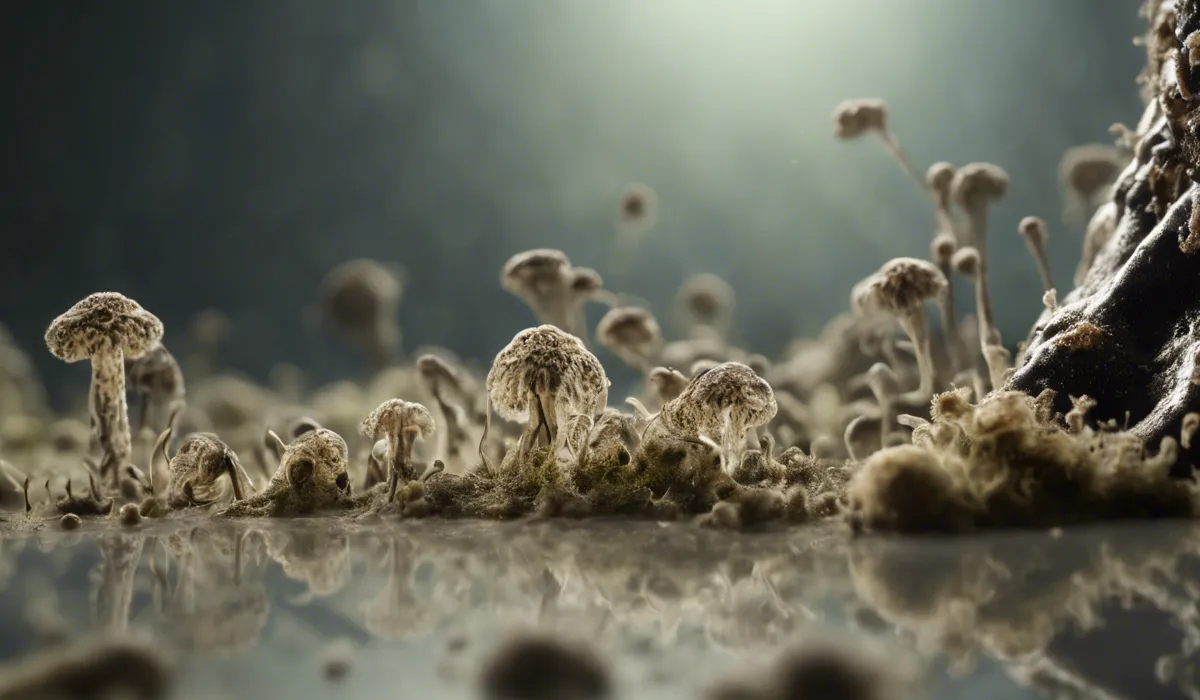Mold spores can survive on surfaces for days to months, depending on environmental conditions. Without moisture, spores remain dormant but viable. In ideal damp conditions, they can start to grow within 24-48 hours.
Mold Spores Lifespan on Various Surfaces

Definition of Mold Spores
Mold spores are tiny, seed-like structures produced by fungi. They are a natural part of the environment and can be found both indoors and outdoors.
Mold spores are incredibly resilient and can survive under harsh conditions. Despite their small size, they play a significant role in the decomposition of organic material but can also cause health issues when they grow unchecked indoors.
Surfaces Mold Spores Can Cling To
Mold spores can adhere to virtually any surface, especially those that are porous or contain organic material.
Common household surfaces where mold spores find a foothold include wood, paper, carpet, and drywall.
They can also settle on less porous materials such as glass or metal, but they are less likely to thrive on these surfaces without the presence of dust, dirt, or other organic debris.
Factors Affecting Mold Spore Viability
The viability of mold spores is influenced by a range of environmental factors. While they can survive on surfaces for days to months, their ability to grow and multiply depends heavily on these conditions.
Key factors include moisture, temperature, the material of the surface, light exposure, air circulation, and available nutrients.
Understanding these factors is crucial for managing and reducing mold in your environment.
Factors That Influence Mold Spore Longevity

Humidity and Moisture Levels
Moisture is perhaps the most critical factor for mold spore activation and growth. Without adequate water, mold spores remain dormant.
However, in the presence of humidity or direct moisture, such as a water leak, spores can become active and start to grow within 24 to 48 hours. Managing indoor humidity is essential for keeping mold at bay.
Temperature and Environmental Conditions
Mold spores thrive in warm, temperate conditions. Typically, temperatures ranging from 60 to 80 degrees Fahrenheit provide an ideal environment for mold growth.
Extreme cold or heat can hinder mold spore activity, but they can remain viable and reactivate when favorable conditions return.
Surface Materials and Porosity
The type and porosity of the surface material greatly influence mold spore viability. Porous materials, such as wood and drywall, trap moisture and offer a plentiful supply of nutrients, making them prime spots for mold growth.
Conversely, non-porous materials like plastic or metal provide less sustenance and moisture retention, which can limit mold spore survival unless organic matter is present.
Light Exposure
Mold generally prefers dark conditions. Ultraviolet (UV) light from the sun is a natural mold inhibitor and can kill mold spores on surfaces.
Thus, areas that receive ample sunlight are less prone to mold growth compared to darker, shaded areas.
Air Circulation
Good airflow can help to dry out damp areas and reduce the humidity that mold spores need to grow.
Well-ventilated spaces are less likely to experience mold issues because the constant movement of air hinders mold spore settlement and growth.
Availability of Nutrients
Mold spores need nutrients to grow, which they often derive from the surfaces they settle on if those surfaces contain organic matter.
Materials like wood, paper, and fabric offer a rich food source, while inorganic materials do not provide the same sustenance unless coated in organic debris.
Managing and Reducing Mold Spore Survival in Your Environment

Regular Cleaning and Maintenance
Keeping your home clean is a fundamental step in managing mold spore survival. Regular dusting and vacuuming can remove potential food sources for mold.
Cleaning spills and promptly fixing leaks can prevent the damp conditions mold spores need to grow.
Controlling Indoor Humidity Levels
Maintaining indoor humidity levels between 30% and 50% is crucial for preventing mold growth.
You can monitor humidity with a hygrometer and use dehumidifiers to maintain an appropriate level, especially in naturally damp areas like basements or bathrooms.
Ensuring Proper Ventilation
Proper ventilation is essential for preventing mold. Use exhaust fans in high-moisture areas like the kitchen and bathroom to expel humid air.
Opening windows and using ceiling fans can also improve air circulation and reduce humidity.
Using Mold-Resistant Materials in Construction
When building or renovating, choose mold-resistant materials such as mold-resistant drywall or paints containing mold inhibitors.
These products can significantly reduce the likelihood of mold growth on surfaces.
Implementing Dehumidifiers and Air Purifiers
Using dehumidifiers in damp areas can keep moisture in check, creating an unfriendly environment for mold spores.
Air purifiers with HEPA filters can capture airborne mold spores, reducing their ability to settle and grow on surfaces.
Importance of Addressing Water Leaks and Dampness Promptly
Water leaks and dampness are the main contributors to mold problems. Fix leaks as soon as they are detected, and dry out affected areas immediately.
If you have experienced significant water damage, it may be necessary to remove and replace the affected materials to prevent mold growth.
FAQs About Mold Spore Longevity on Surfaces
How long can mold spores remain viable on surfaces?
Mold spores can remain viable on surfaces for days to months, depending on the environmental conditions.
Do mold spores die if they are not in a moist environment?
No, without moisture, mold spores become dormant but can stay alive and viable.
What happens to mold spores on dry surfaces?
On dry surfaces, mold spores remain dormant but viable, waiting for ideal conditions to grow.
How quickly can mold spores start growing on a surface once it becomes damp?
In ideal damp conditions, mold spores can start to grow within 24-48 hours.
Can cleaning surfaces remove mold spores completely?
Cleaning can reduce the number of mold spores on a surface but may not remove them completely, especially if the spores are deeply embedded.
Final Thoughts
Mold spores are capable of surviving on various surfaces for extended periods, ranging from several days to months, depending on environmental factors.
These spores remain dormant yet viable in the absence of moisture. However, given the presence of dampness, mold spores can initiate growth within a span of 24 to 48 hours.
